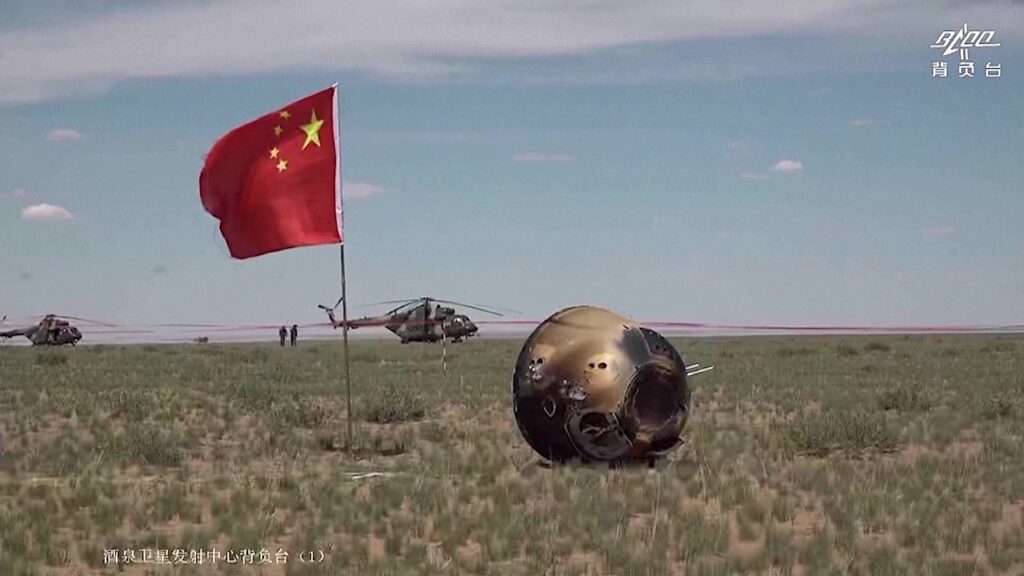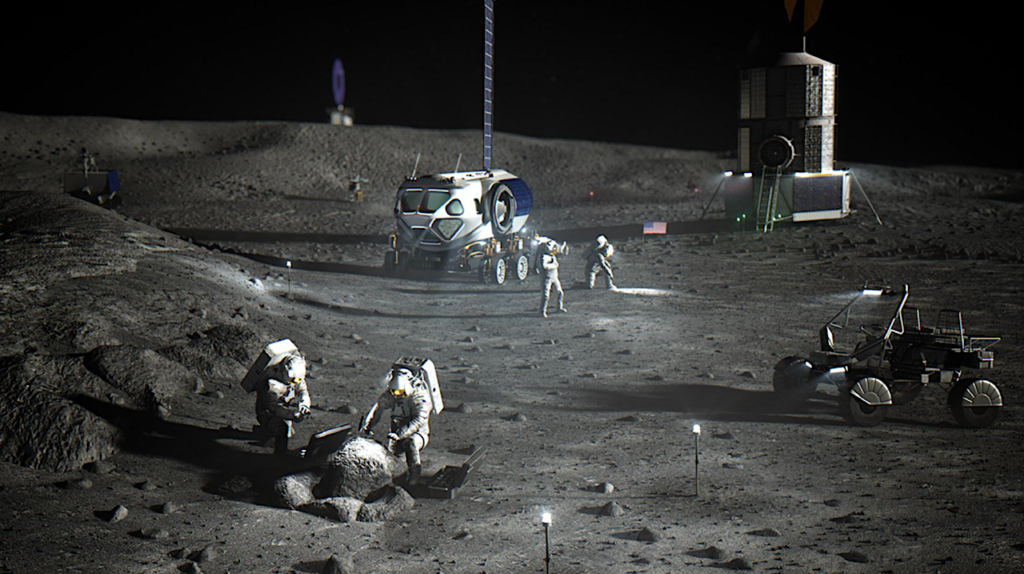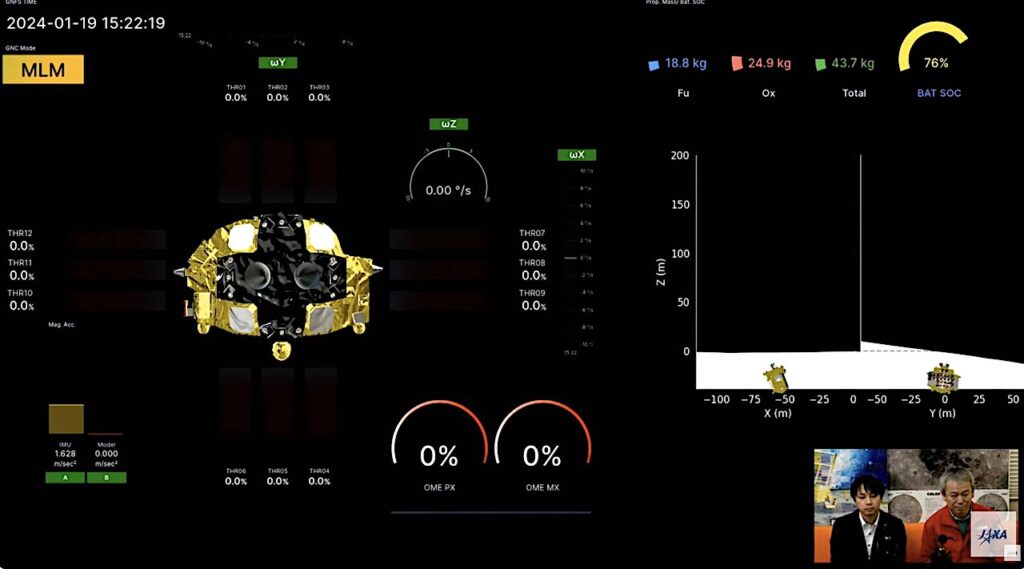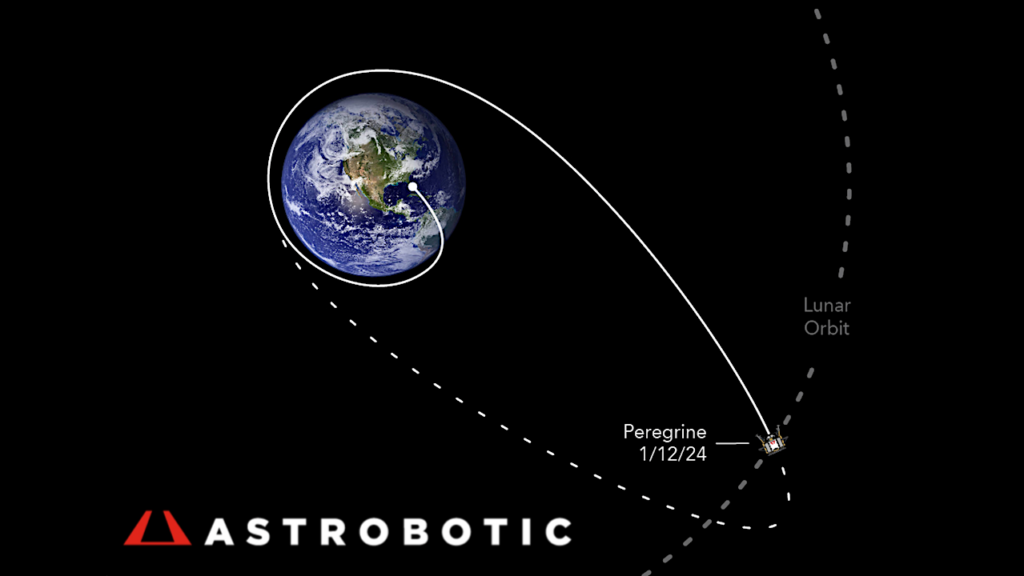The Video: Water on the Moon
 Water on the Moon (video), NASA Goddard
Water on the Moon (video), NASA Goddard
“Since the 1960’s, scientists have suspected that frozen water could survive in cold, dark craters at the Moon’s poles. While previous lunar missions have detected hints of water on the Moon, new data from the Lunar Reconnaissance Orbiter (LRO) pinpoints areas near the south pole where water is likely to exist.”









Nice little 2 minute video. Informative (e.g., explaining why it took so long to come to these conclusions) without over dramatizing the implications. Good job Goddard.
It’s almost like teasing us that NASA reminds us every so often that there’s almost certainly a significant amount of water at the lunar pole, since they are also reminding us, ever more often, that nobody’s going back to the Moon any time soon (at least no one from this part of the Earth).
One thing I’ve never been able to find an answer about — if the inference of water is based on the level of hydrogen detection, and if the measured hydrogen is close to or at the lunar surface, in whole or in part, (as would seem to be indicated by the “interaction” measurement method), then how much of the measured hydrogen is actually within molecules that are being outgassed and lost, as opposed to being part of the material making up the lunar surface which is retained and available for water extraction?
If water/hydrogen pressures and volumes are higher below the surface than near or at the surface (which I would expect), then I would think that continued migration of water upward to the surface (from higher to lower pressure) has been and likely still is going on, and therefore there has been constant outgassing, however small the rate might be.
I’m not being skeptical, just cautious, when I ask, are these cumulative hydrogen measurements an accurate, or even indicative, measure of the lunar surface’s trapped water content, or is some significant portion of what’s being measured actually the rate of water that we’re losing through continued hydrogen outgassing? And if the latter, what are the proportions, and is there any way, now or in the future, to divide LRO observations up according to retained water vs. outgassed hydrogen?
(One consideration is the monatomic oxygen liberated from water when its hydrogen is separated and outgassed; is the oxygen immediately outgassed as well or does it chemically combine with any of the surface materials? If it’s a combination of the two, can the proportions be calculated and can the “combined” portion somehow be measured in surface samples, at least to a meaningfully indicative accuracy, in order to calculate retained hydrogen/water?)
One final question — on space program time scales (which sometimes seem to compare with geological time scales (just joking)), any lunar water must be considered a non-renewable, limited resource. Is there anything in the LRO data, or any extensions or extrapolations of it, that can be used to accurately estimate the total volume of “available” water for extraction and the min and max flow rates that we can count on? These would seem to me to be necessary factors for making any informed decisions about using lunar pole water sources for any proposed lunar programs.
There are lots of analyses from remote sensors of water and hydroxyl in lots of Lunar sources. The problems (IMHO) are (1) we don’t have ground truth and (2) we haven’t validated experimental techniques for taking advantage of it.
When funding for Constellation got tight, one of the first things to go were the proposed Lunar robotic landers. They were supposed to follow LRO. 🙁
I wish there was regular funding (I know, “What’s that?”) to send multiple small landers to the Moon (maybe 2-4 per year) for multiple years, reusing the basic same launch vehicle and landers, but just sending them to different locations and swapping out experiments/sensors as we learn from each previous mission.
A lot of questions could be answered.
BTW, here is a starting point for some of the remote sensing work if anyone cares (its a little dated):
http://www.sciencemag.org/c…
Thanks for info CadetOne.
I like your reusable small lander proposal. This sort of thing could have been under way many years ago if there was an overall game plan. As it is, without a master plan we just keep bouncing around from one new priority to the next, without any real cumulative results, the Mars rovers being the only real example of learn and move forward. For the money that’s been spent I think we could have accomplished a lot more.
You are wrong about nobody going back to the moon – Chang’e-3 is being prepared for launch.
I did say, “at least no one from this part of the Earth.”
Chang’e-3 isn’t going anywhere near the poles and the Chang’e missions are all robotic, at least until around 2025 when they may consider a manned landing, so I guess we still theoretically have a chance at being first to get to the polar water sources. The Chang’e program includes a sample return mission which is a pretty big step forward. I wish them well. Maybe by 2025 we’ll all be getting along better and cooperation on the Moon will be be a possibility.